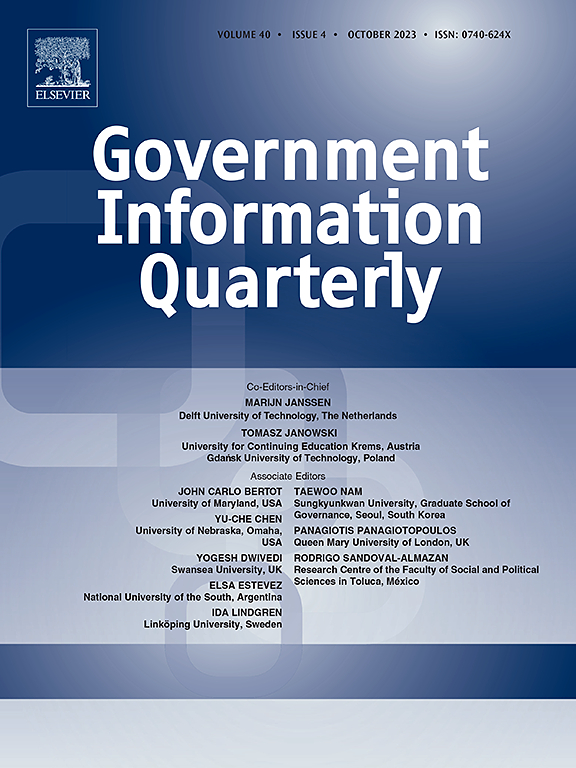Hybrid intelligence for the public sector: A bibliometric analysis of artificial intelligence and crowd intelligence
IF 7.8
1区 管理学
Q1 INFORMATION SCIENCE & LIBRARY SCIENCE
引用次数: 0
Abstract
With the increasing attention paid to artificial intelligence (AI) and crowd intelligence (CI) in government, their connections still need to be explored. This study explores the dynamic relationship between AI and CI that constitutes hybrid intelligence for the public sector. Thus, we adopt a bibliometric analysis to identify trends, emerging themes, topics, and interconnections between these two streams of literature. Our review illustrates the intersection between AI and CI, revealing that AI designs can improve efficiency from CI inputs. Meanwhile, AI advancement depends on the quality of CI data. Furthermore, our review highlights key domains such as smart cities (Internet of Things), personnel design, social media, and governance through cases. Based on these illustrated cases, we conceptualize a hybrid intelligence spectrum, ranging from “engagement” to “efficiency,” with crowd intelligence anchoring the former through its emphasis on public participation and AI anchoring the latter through its focus on automation and optimization. Hybrid intelligence, encompassing various forms, occupies the middle ground to balance maximizing public engagement and achieving computational efficiency. Additionally, we elaborate on components of hybrid intelligence designs regarding input (conscious crowds and unconscious crowds), process (algorithmic management and artificial discretion), and outcome (user-focus benefits and non-user-focus outputs). Finally, we recommend prioritizing questions related to the design, regulation, and governance of hybrid intelligence for the public sector.
求助全文
约1分钟内获得全文
求助全文
来源期刊

Government Information Quarterly
INFORMATION SCIENCE & LIBRARY SCIENCE-
CiteScore
15.70
自引率
16.70%
发文量
106
期刊介绍:
Government Information Quarterly (GIQ) delves into the convergence of policy, information technology, government, and the public. It explores the impact of policies on government information flows, the role of technology in innovative government services, and the dynamic between citizens and governing bodies in the digital age. GIQ serves as a premier journal, disseminating high-quality research and insights that bridge the realms of policy, information technology, government, and public engagement.
 求助内容:
求助内容: 应助结果提醒方式:
应助结果提醒方式:


